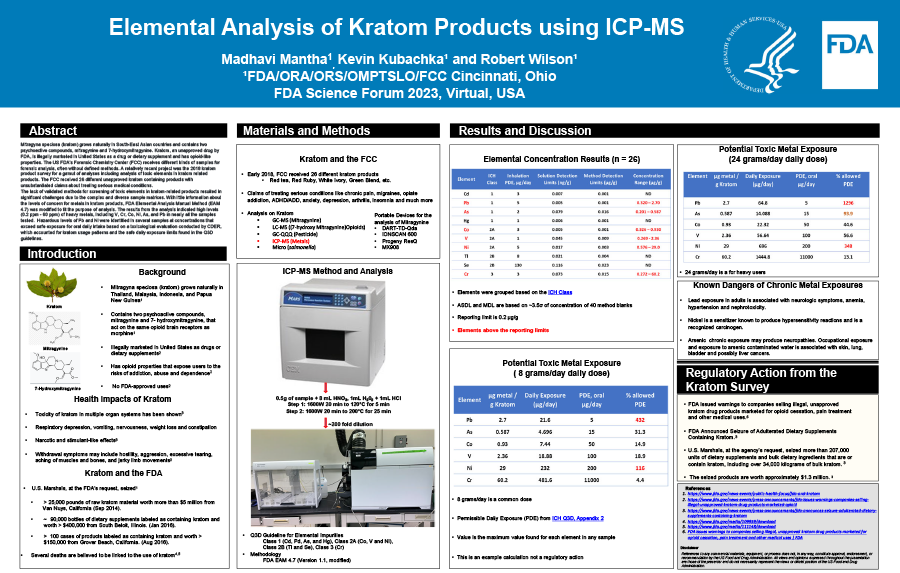2023 FDA Science Forum
Elemental Analysis of Kratom Products using ICP-MS
- Authors:
- Center:
-
Contributing OfficeOffice of Regulatory Affairs
Abstract
Mitragyna speciosa (kratom) grows naturally in South-East Asian countries and contains two psychoactive compounds, mitragynine and 7-hydroxymitragynine. Kratom, an unapproved drug by FDA, is illegally marketed in United States as a drug or dietary supplement and has opioid properties.
US FDA’s Forensic Chemistry Center (FCC) receives different kinds of samples for forensic analysis, often without defined methods. A relatively recent project was the 2018 kratom product survey for a gamut of analyses including analysis of toxic elements in kratom related products. FCC received 26 different unapproved kratom products with unsubstantiated claims about treating serious medical conditions.
The lack of validated methods for screening of toxic elements in kratom-related products resulted in significant challenges due to the complex and diverse sample matrices. With little information about the levels of concern for metals in kratom products, FDA Elemental Analysis Manual Method (EAM 4.7) was modified to fit the purpose of analysis and used Q3D Elemental Impurities Guidance to determine reporting limits. The results from the analysis indicated high levels (0.2 ppm - 60 ppm) of heavy metals, including V, Cr, Co, Ni, As, and Pb in nearly all the samples tested. Hazardous levels of Pb and Ni were identified in several samples at concentrations that exceed safe exposure for oral daily intake based on a toxicological evaluation conducted by CDER, which accounted for kratom usage patterns and the safe daily exposure limits found in the Q3D guidelines.

